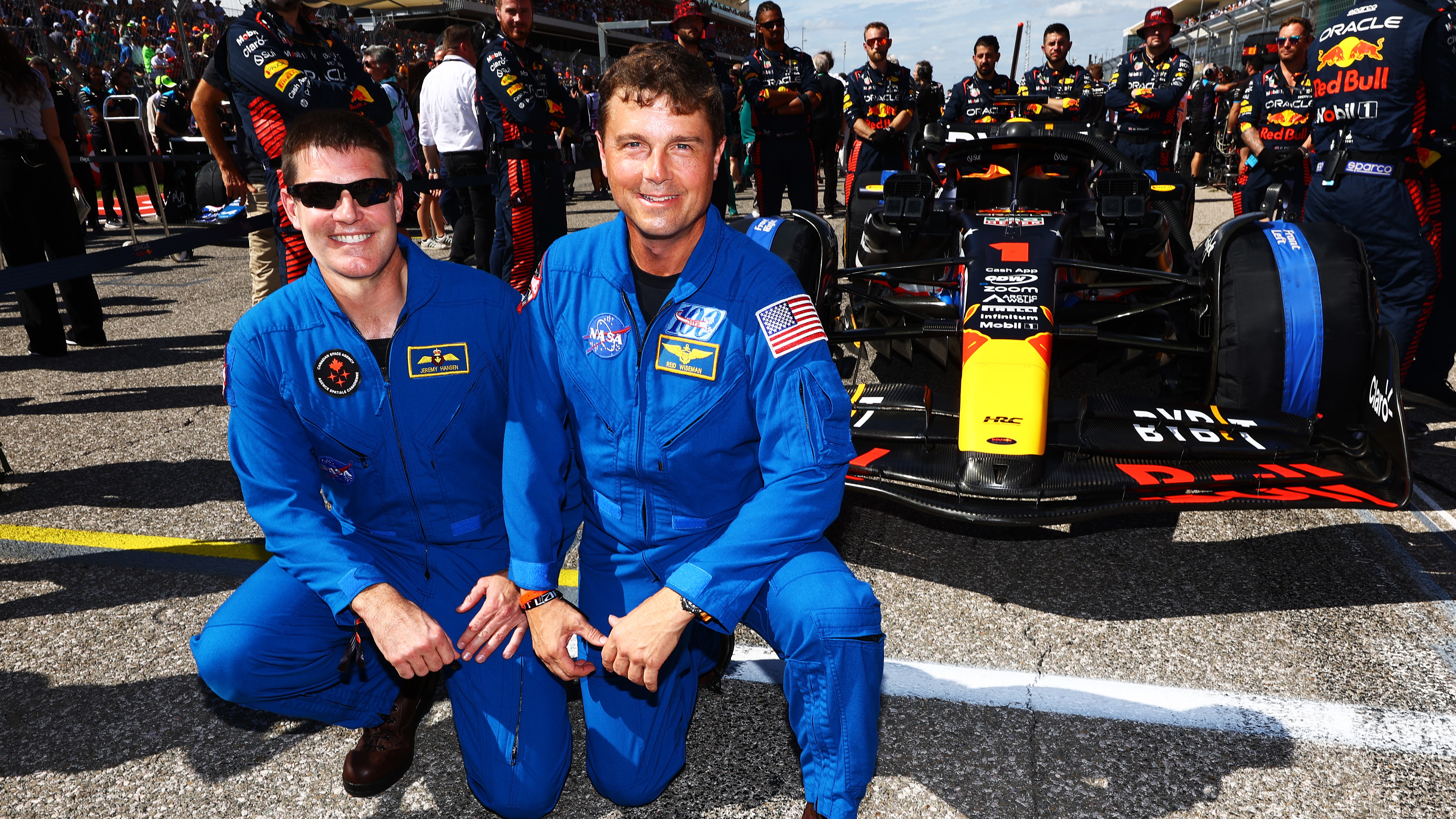Artemis 2 moon astronauts meet car racing teams at Formula 1
Car racing has "many overlaps" with how astronauts speak with Mission Control during a mission.

Two moon astronauts met with car racing teams to talk over how to make decisions on the fly.
NASA's Reid Wiseman and the Canadian Space Agency's Jeremy Hansen are set to fly around the moon on Artemis 2 no earlier than November 2024. They walked out on the grid of the Formula 1 (F1) Grand Prix of the United States in Austin, Texas Sunday (Oct. 22), speaking with teams on site about how they keep their race cars humming safely during the big race.
Wiseman will command a crew of four, including mission specialist Hansen, NASA mission specialist Christina Koch and NASA pilot Victor Glover, in the first human moon mission in half a century. The four astronauts will be the first people to fly aboard the agency's Space Launch System (SLS) rocket and Orion spacecraft. Their mission, should it go well, will prepare the greater Artemis program for crewed moon landings later in the decade.
Related: Why Artemis 2 moon launch with astronauts is different from Artemis 1
Both rockets and racing cars are high-powered machines requiring complex infrastructure and highly-trained teams to keep them running. But unlike NASA's SLS, racing vehicles such as the McLaren Formula 1 car can be changed out in the middle of its mission.
In a typical six-week period, a McLaren F1 car will see 80% of its hardware change every six weeks, representing 18,000 parts, a recent press release stated.
"In Formula 1, if you're standing still, you're actually going backwards because of the teams' pace of development," Zak Brown, CEO of McLaren Racing, said in the statement. "These are hundredths of seconds that all ultimately add up — so everything on our race car is data-driven."
Get the Space.com Newsletter
Breaking space news, the latest updates on rocket launches, skywatching events and more!
Hansen paid tribute to that team's decision-making capabilities in a post on X (formerly Twitter) showing he and Wiseman at the grid. "Enjoyed a fascinating conversation with "@McLarenF1 on how … their large team manages complex and critical decisions within seconds. Many overlaps with how we interact with Mission Control to achieve space mission success," Hansen wrote.
Enjoyed a fascinating conversation with @McLarenF1 on how the their large team manages complex and critical decisions within seconds. Many overlaps with how we interact with Mission Control to achieve space mission success. #USGP @astro_reid pic.twitter.com/okHLQhtPjVOctober 22, 2023
The publicity appearance comes amid a busy month for the Artemis 2 crew. The quartet will start practicing for Earth orbit operations at NASA's Johnson Space Center, including using cameras for geology and to document their time aboard Orion and the views of Earth and the moon they will see through the spacecraft's windows. Medical training is ongoing and they will also participate soon in a simulated recovery exercise with NASA and the U.S. Navy, agency officials said in an Oct. 19 statement.
Recent milestones in Artemis 2's training, which began in April, saw the crew march out to the launch pad in spacesuits for a liftoff dress rehearsal and practice key mission milestones in the Orion spacecraft simulator. Hansen and Koch together also participated in geology training led by Gordon Osinski of Western University, a Canadian crater specialist who is on the Artemis 3 landing support team that will assist astronauts from Mission Control.
NASA is also emphasizing that the astronaut crews will be more diverse than the previous Apollo program that visited the moon in the 1960s and 1970s. Hansen will be the first non-American to leave low Earth orbit, while Koch is the first woman and Glover the first Black astronaut.
Join our Space Forums to keep talking space on the latest missions, night sky and more! And if you have a news tip, correction or comment, let us know at: community@space.com.

Elizabeth Howell (she/her), Ph.D., was a staff writer in the spaceflight channel between 2022 and 2024 specializing in Canadian space news. She was contributing writer for Space.com for 10 years from 2012 to 2024. Elizabeth's reporting includes multiple exclusives with the White House, leading world coverage about a lost-and-found space tomato on the International Space Station, witnessing five human spaceflight launches on two continents, flying parabolic, working inside a spacesuit, and participating in a simulated Mars mission. Her latest book, "Why Am I Taller?" (ECW Press, 2022) is co-written with astronaut Dave Williams.









